Magnesium alloy materials are suitable for thin-walled structural components and large internal structural components due to their excellent casting fluidity.
1.1 Doors
The advantages of magnesium alloy as a material for door inner panels are its light weight, generally with a tensile strength greater than 220 MPa and an elongation greater than 10%. Because magnesium alloy is susceptible to corrosion, connections are generally not welded, but rather bolted or glued.
In 2004, the weight of Mg side door components of the Aston Martin DB9 was reduced by about 43%. The integral die-cast inner panel of the Mercedes S-Class coupe weighs only 4.56 kilograms.
In 2009, Mercedes continued to use this technology to develop E-Class T-model doors. Lotus Engineering's weight reduction evaluation of the 2009 Toyota Venza crossover found that magnesium castings weighing over 26 kilograms were used inside the side and lift doors, resulting in a 41% weight reduction.
In 2012, a sponsored project led by General Motors (GMC) Energy Department developed an integrated die-cast Mg door internal structure, which incorporated the door speaker into the casting design and reduced weight by 50%.
In addition to Mercedes, Aston Martin Vanquish S has also carried out development work in the area of casting magnesium alloy side door inner panels, as shown in figure (a).
Fiat Chrysler Automobiles announced that the 2018 new Jeep Wrangler rear door uses Mg die-castings, as shown in figure (b).
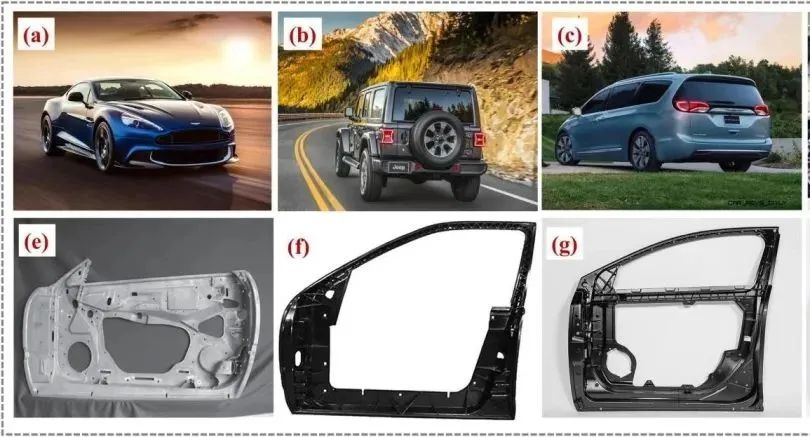
The limited space available in car doors and the restrictions on the open portions of the die-cast parts designed for component extrusion require creative design to meet stiffness and collision requirements. In 2010, the Lincoln MKT interior door panel was the first die-cast Mg opening and closing component, with the core technology being the use of appropriate reinforcements and smooth tools in a continuous design optimization process. For the 2017 model, the Chrysler Pacifica used magnesium alloy die-cast parts in the tailgate, with added reinforcement and thickness to improve tailgate performance. At the same time, integrated design replaced nine components, reducing total weight by 50%, as shown in figure (c).
1.2 Front-end frame and upper parts
Replacing hydraulic-formed steel, tubular steel, extruded aluminum, and plastic composite materials with die-cast magnesium alloy as front-end frame components helps to reduce additional variable costs. In 2003, Ford developed a front-end support component for the F-150 light truck, reducing weight by about 4.6 kg. So far, Ford has cleverly utilized the flexibility of magnesium alloy die-casting to maintain its products' competitiveness in the market.
In 2007, the Chinese Ministry of Science and Technology, the United States, and Canada launched the "Research and Development of Front-End Structures for Magnesium Vehicles" project, which is a good example of promoting front-end frame lightweighting.
The Tesla Model S, developed in 2012, uses a fully die-cast magnesium alloy front-end frame weighing only 6.49 kg, as shown in figure (a). The front-end frame of the Porsche Panamera G2 is made of AM50A, with a weight reduction of 3.5 kg (figure (b)). The front-end carrier material for the Range Rover is AM60B, achieving a weight reduction of 7.1 kg (figure (c)).
In 2009, the Jaguar XJ's upper front component was made of magnesium alloy AM60B, weighing 4.6 kg, as shown in figure (d). Compared with the previous generation's hydraulic-expanded aluminum tube solution, the weight was reduced by 30%.
In 2015, the Mercedes-AMG GT upper front component was made of magnesium alloy AM60B, as shown in figure (e). The total weight was 3.5 kg, fixed with bolts.
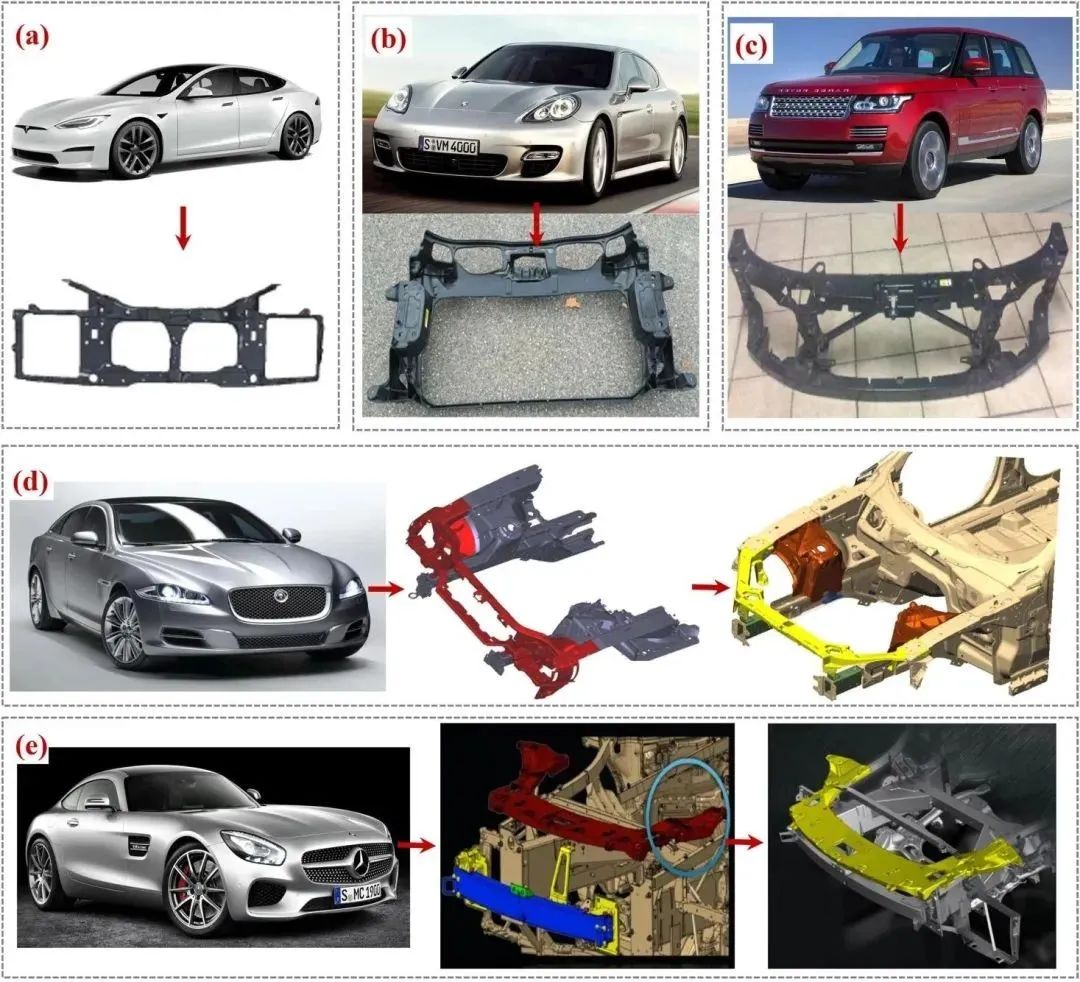
1.3 Panel roofs
In 1997, the Chevrolet C-5 Corvette introduced a monolithic die-cast magnesium alloy roof, which has been used in GMC and BMW 3 Series convertibles to this day.
Mg is also used in the hardtop and roof frame of the Cadillac XLR convertible.
The Mercedes-Benz SL/SLK series of cars also use a Mg folding roof, as shown in (a).
Chrysler introduced a lightweight magnesium-intensive body structure in its high fuel economy vehicle program. Replacing panel roof material with magnesium alloy can reduce weight by more than 40% compared to traditional steel structures, as shown in (b).
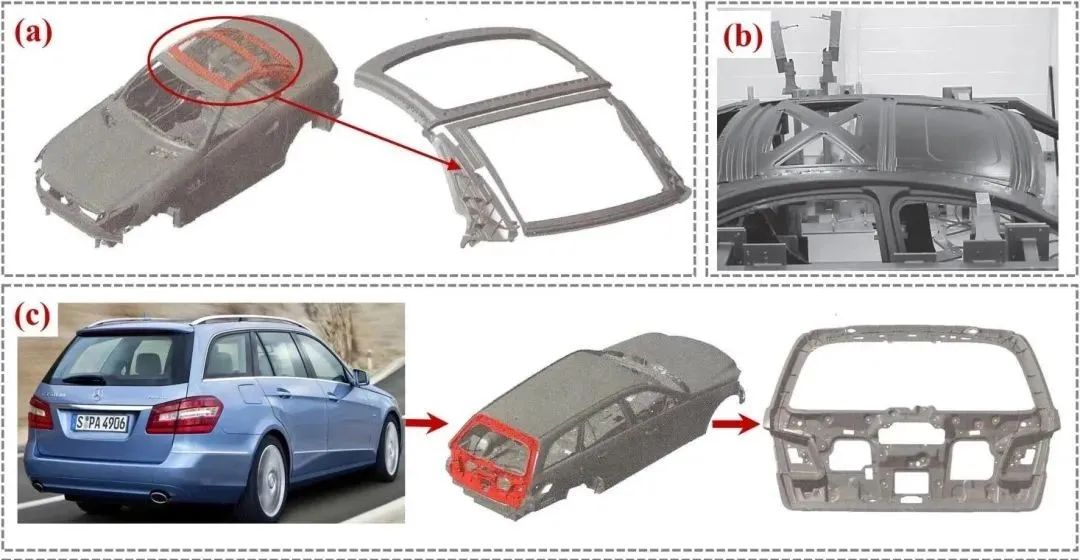
1.4 Engine Hood and Trunk Lid
As early as 1951, GMC manufactured a prototype engine hood for the Buick LeSabre, and then in 1957, it manufactured various body panels for the Chevrolet Corvette SS racing car, and in 1961, it manufactured engine hoods.
Mercedes-Benz also attempted to use AM50 to manufacture the trunk lid of the E-Class Touring car, which weighed 15,310 grams.
Chassis System
The application of magnesium alloy in the automobile chassis is a consideration for the lightweight, safety performance, strength, plasticity, and corrosion resistance of the automobile.
2.1 Wheels
Compared with aluminum materials, magnesium alloy wheels have higher strength and toughness. Aesthetic appearance, shock absorption performance, and heat dissipation are also the main advantages of magnesium alloy wheels. In the karting series we know, the average weight of magnesium alloy wheel hubs is around 560 grams, while the weight of the same type of products has increased by about 300 grams. The wheels are the rotating parts under the car's suspension, and the handling and comfort performance of the whole car are closely related to magnesium alloy wheels.
However, due to the high variable cost and poor applicability of magnesium alloy, it is currently only applicable to high-performance sports or racing.
In 1967, Ferrari upgraded the 330P3 model to the 330P4 model, using magnesium alloy wheel hubs and wider tires. Ferrari immediately used them in races until the first set of BBS forged magnesium alloy wheels appeared in 1992.
The German company Porsche has been using AM60A magnesium alloy die-cast wheels since 1970.
Since 1998, GMC has been using magnesium alloy wheels on light duty Corvettes. Figure (a) shows the low-pressure cast magnesium alloy wheels of the Chevrolet Corvette.
Especially in the United States, a type of magnesium alloy wheel has been developed that can continue to drive at a speed of no more than 48 kilometers per hour even after the tire is punctured.
The Changan EADO EV not only provides a power conversion system but also adopts a multi-spoke ZK61 wheel. The forging process reduces the gap between the wheel arch and the wheel hub, thus reducing weight.
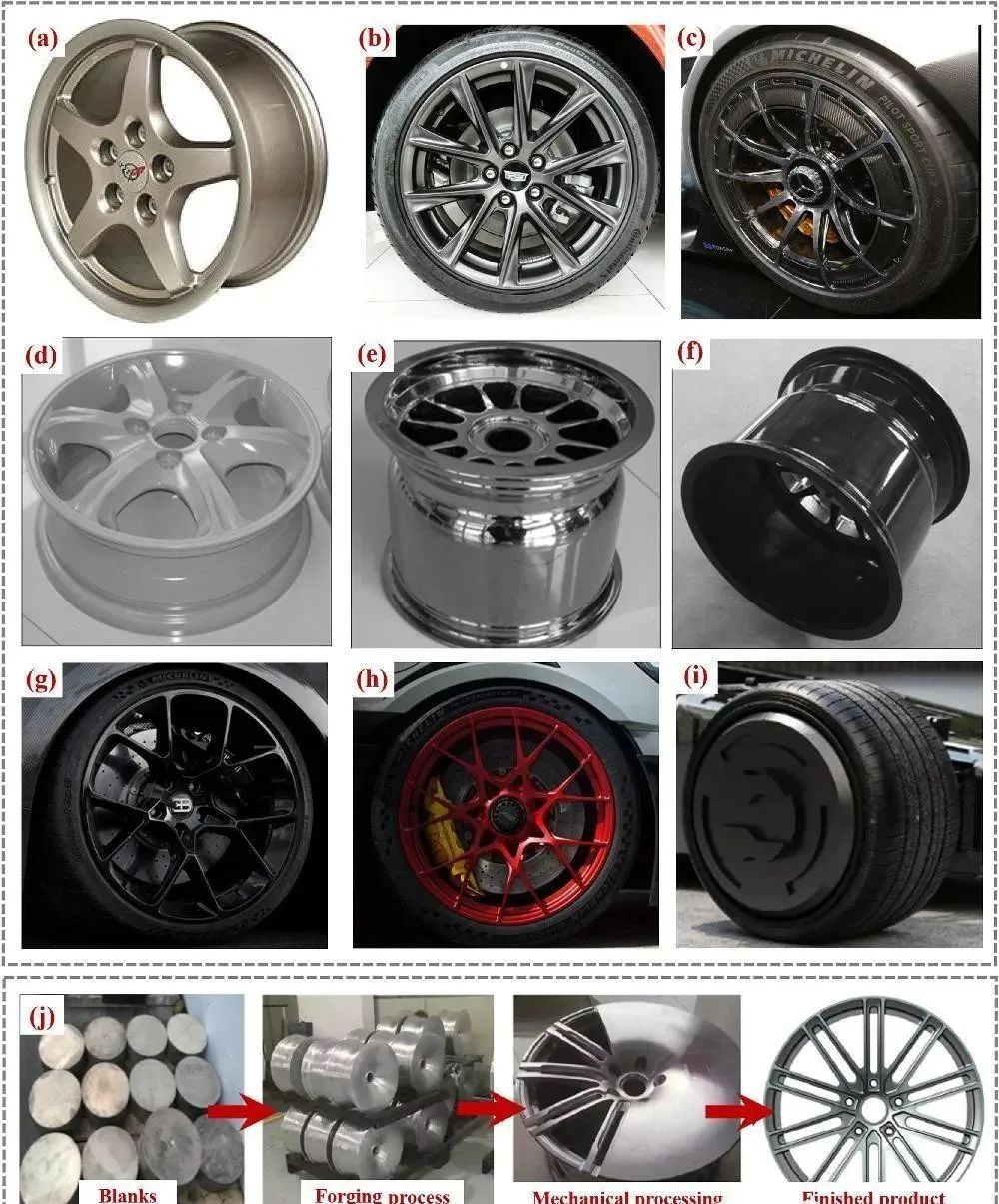
In 2014, Wang disclosed a preparation method in a patent that uses magnesium alloy, aluminum alloy, and other metal forward and reverse extrusion to produce wheels, which provided prerequisites and guarantees for industrial production. Subsequently, Wang authorized Linzhou Magnesium Industry Technology Co., Ltd. and Dewei Co., Ltd. to develop a superplastic forming process that forges forward and reverse extrusion in one process, which only requires one press, and improves material utilization and reduces costs through a forward and reverse extrusion forming process. The technological process shown in Figure 5(j) includes blank cutting, one-time molding and equalization treatment after forward and reverse extrusion, processing, and surface coating.
AZ80 magnesium alloy extruded wheels have been sold in small batches, greatly improving production efficiency, and have broad development prospects and huge market space.
In 2018, the Magnesium Branch of China Nonferrous Metals Industry Association and experts discussed the one-time forming patent technology for forging magnesium alloy car wheels by forward and reverse extrusion. The meeting unanimously believed that the technology is innovative, an important technological breakthrough to achieve lightweight automobiles, and also the basis for industrialization and large-scale production.
At present, the processing technology of magnesium alloy wheels mainly includes casting and forging, and forging technology mainly includes isothermal extrusion, forging and rotary forging processes. Forging magnesium alloy wheels have the characteristics of compact structure and excellent mechanical properties and have been widely used in special vehicles and high-end racing cars. Isothermal superplastic die forging can be used to form AZ80 car wheels in a single operation, with vibration reduction performance about 30 times higher than that of aluminum wheels, and total fuel savings exceeding 16%, as shown in Figures (d), (e), and (f).
In order to improve the strength of the wheel hub, Wang proposed a new hollow blank extrusion forming method and successfully extruded an integral magnesium alloy wheel hub with AZ80+ alloy. The first production of the forging rotary forging process Mg wheel hub will be offered as an optional configuration for the Cadillac V-Series, and the 2022 CT4-V BLACKWING and CT5-V BLACKWING will also be launched in North America in the summer.
In 2022, the optional 9-spoke MG forged wheels were sold with AMG Project One, using patented biomimetic design, as shown in Figure (c). In April 2022, Bugatti launched the Chiron Super Sport 300+, with only 30 units produced globally. The carbon fiber body and magnesium alloy wheels make this supercar as light as possible, reducing weight by a further 16 kg under the effect of the springs, as shown in Figure (g).
In August 2022, Porsche officially launched the new generation of Porsche 911 GT3 RS, which uses magnesium alloy forged wheels, reducing weight by 8 kg, as shown in Figure (h).
In September 2022, Vietnam's Bandit9 Motors launched a single-seater racing car named "Monaco," with a length, width, and height of 3815/1955/980 mm, a wheelbase of 2850 mm, a weight of 795 kg, and lightweight magnesium alloy wheels with 315/35R20 tires, as shown in Figure (i).
2.2 Steering wheel
The application of magnesium alloy on the steering wheel has been highly recognized and accepted in the world due to its energy absorption and vibration damping performance. Magnesium alloy steering wheels have performance advantages that traditional steering wheels made of low carbon steel, engineering plastics, and other materials cannot match.
The die-casting process is currently the most commonly used method for magnesium alloy steering wheels. The Chery AM50A magnesium alloy steering wheel frame is made using cold chamber die-casting, achieving a weight reduction of over 25%.
The body weight of the magnesium alloy steering wheels used in Dongfeng Nissan and Citroen's passenger cars is only 876.5 g. Shenyang University of Technology has used traditional welding structures assembled together and employed integral die-casting to produce high-toughness magnesium alloy steering wheel frames. Chongqing Magnesium Industry provided more than 7,000 A2401-002 magnesium alloy steering wheels to Shanghai GMC, as shown in Figure (a). Due to the elimination of the welding process, the cost advantage of magnesium alloy steering wheels has been favored by many automakers.
In 2008, Mao analyzed the fatigue fracture of AM50HP-F through experiments and scanning electron microscopy and discussed its application prospects, as shown in Figure (b). The Flow-3D software was used to optimize die-casting process parameters such as filling speed, crystallizer temperature, and casting temperature, and this technology also provided certain development support for actual manufacturing by automakers.
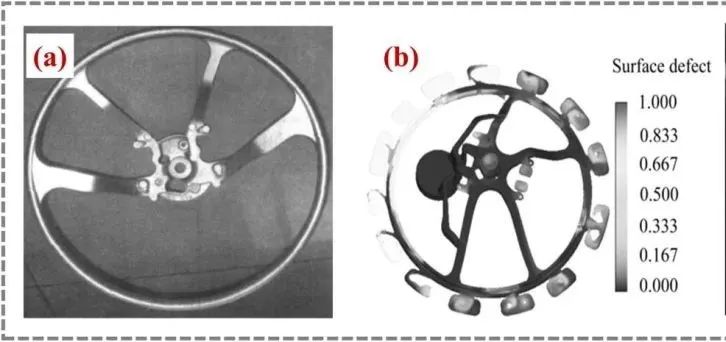
Powertrain System
Due to the excellent casting performance of magnesium alloys, engine cylinder blocks, cylinder heads, gearboxes, and oil sumps began to shift from the initial aluminum alloy materials. Currently, both Volkswagen and Audi are equipped with magnesium alloy engines and transmissions, with material operating temperatures below 120°C, which is the key opportunity for magnesium alloys to achieve lightweighting.
3.1 Engine and Transmission Housing
In the 1930s, Louris Chevrolet first used Mg pistons in racing cars.
Figure (a) represents the magnesium alloy crankcase of a Chevrolet.
The powertrain of the Volkswagen Beetle used approximately 20 kilograms of magnesium castings for the production of crankcases and transmission housings. The consumption of magnesium in the automotive industry accelerated again and reached its peak.
The Volkswagen Passat and Audi A4 and A6, as well as the Ford truck transmission housing, use AZ91D magnesium alloy.
Audi also uses more magnesium alloys in its powertrain system, such as the intake module of the W12 engine, the cylinder head of the V8 engine, and the housing of the five-speed manual transmission.
About 600 transmissions made of magnesium alloy materials are used in Volkswagen's B-class cars every day.
By the 1990s, simulation tools made it possible to cast a wider range of products, including CCB, seat frames, steering wheels, intake manifolds, and so on.

In 2001, the US Automotive Materials Partnership (USAMP) and the US Department of Energy launched the Magnesium Intensive V6 Engine Project. The project successfully developed a Mg alloy design and a database of general specifications, with 29% of parts being replaced by alloys, as shown in Figure (b).
Other important applications include the new 7G-Tronic seven-speed automatic transmission housing for Mercedes-Benz (see Figure (c)).
Changan's transmission and cylinder head components passed bench and road tests and were mass-produced in 2004.
3.2 Oil pan
The noise of the engine at low and medium speeds is mainly caused by the radiated noise of the engine. Thin-walled parts such as the oil pan, cylinder head cover, and timing gear cover contribute a significant proportion of the overall noise. In addition, the oil pan has clear requirements for various mechanical properties, especially tensile strength. Currently, most oil pans are made of aluminum alloy. The trend to reduce vibration and noise requires the search for lighter materials, and magnesium alloys are favored for their advantages in this regard.
Several pressure casting tests have been performed using AJ alloy in North America and Europe. The valve cover in Figure (a) and the oil pan in Figure (b) were cold-chamber machine-cast at Spartan Light Metal Products. Excellent casting performance was observed in these alloys, with no tendency for clogging or cracking and good flowability.
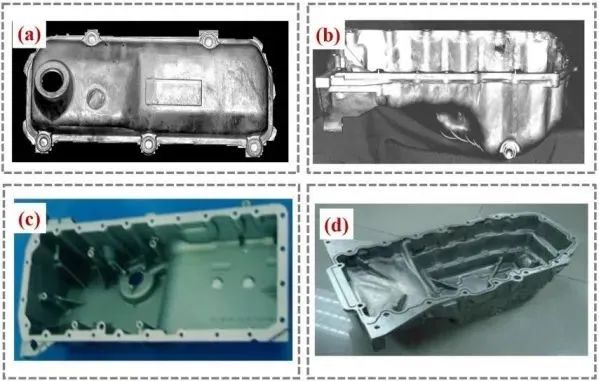
The oil pan is made of heat-resistant magnesium alloy, which can reduce the weight by up to 33% compared to aluminum alloy. Magnesium alloy oil pans for the Honda Insight and CA20 achieved a significant weight reduction, as shown in Figure (c) and (d).
Internal systems
Magnesium alloy automotive interior components should have good strength, ductility, energy absorption, and casting performance, as it is related to the safety performance of the vehicle. Some typical internal systems include seat frames, CCB, central console supports, steering housing, etc.
4.1 Seat frame
Front seats generally have more functions and a more complex structure, while rear seats have fewer functions and a simpler structure. Currently, magnesium alloy is mainly used in the backrest frame and seat pan frame.
In the 1990s, the integrated three-point seat belt was widely used in production vehicles for the first time. The seats of Mercedes-Benz sports cars used a new magnesium alloy die-casting process to integrate complex parts into two parts: the backrest and the seat pan, with a total weight of 8.5 kilograms. AM50 (used for backrest support and the entire seat frame) and AM20 (used for backrest shell) are two materials that are perfect for magnesium alloy seats' general requirements, which makes it possible to produce cars with high rigidity and excellent extensibility of the frame components.
In recent years, the design and manufacturing of magnesium alloy seats have also undergone significant improvements.
The Alfa Romeo 156 model uses a magnesium alloy front seat frame, with a backrest weight of 1.0 kilograms and a seat pan weight of 1.2 kilograms, reducing the weight by 2.8 kilograms compared to the original steel frame.
The DaimlerChrysler 500 SEL sports car and Hyundai Genesis coupe model both use die-cast Mg seat frames.
In 2009, Changan Automobile developed magnesium alloy seats for the Oushang E01 model, which achieved a weight reduction of 25–30% and a yield of more than 90%, as shown in Figure (a).
The seat of Qiantu K50 model adopts Al–Mg alloy frame, the weight of the backrest is 1.18 kg, and the weight of the seat pan is 1.4 kg. The surface is covered with leather + Alcantara splicing material, as shown in picture (b).
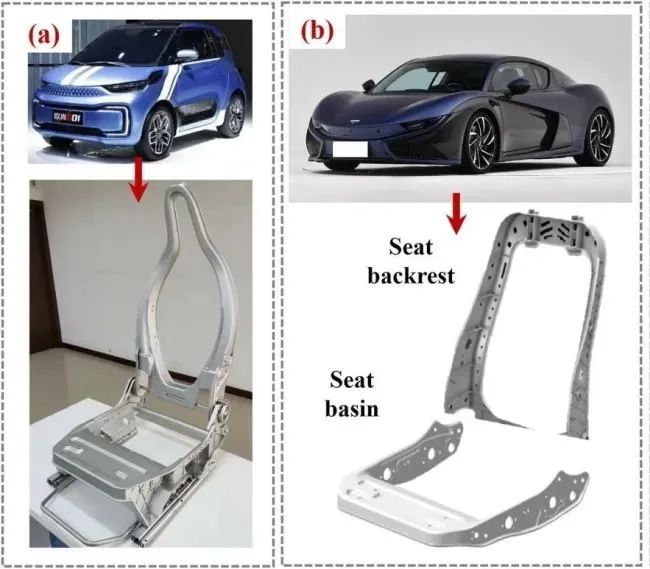
4.2 Center console bracket
Compared with magnesium die-casting, forged magnesium offers further cost-saving opportunities in many interior applications, such as the center console bracket. Currently, the Mg center console of Porsche Cayman and Porsche PO series is smaller in size.
In addition, Volvo S80 and XC60 have a central bracket made of AM50A, weighing 1 kg and 2.2 kg respectively.
A company has introduced an AZ91D material center console bracket, which is die-cast by a 2000-2500t press. The part is lightweight, has good shock absorption, and a wall thickness of only 2 mm.
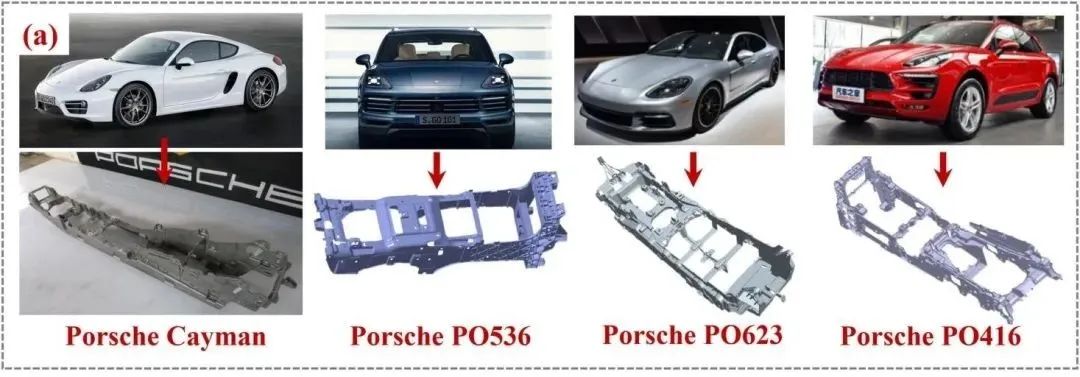
As an engineering material, magnesium has firmly established its position in the automotive industry with its excellent performance. This article mainly illustrates the extensive use of magnesium alloys in the automotive industry with examples, in order to increase the confidence of OEMs in developing new parts. At the same time, the application of magnesium alloys still follows the principle of using suitable materials in suitable places, fully tapping their advantages such as light density and good flowability, and minimizing their disadvantages such as low strength and susceptibility to corrosion.
Issues related to process and cost, lack of technical innovation capability, and industrial structural contradictions have limited the development of magnesium alloys in the automotive industry. However, this fully demonstrates the promising prospects of this application. In order to make magnesium alloys a substitute material with additional environmental and economic benefits, the production of automotive components must be closer to consumers. In addition, under policy support, more attempts to use green power electrolytic magnesium technology are a recyclable and eco-friendly way. These challenges are global and require strong cooperation throughout the industry chain. In the near future, breakthroughs in new magnesium alloy structures and technologies will better meet the growing demand for automotive lightweighting.